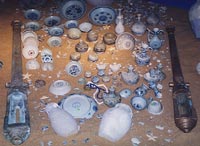Fan fiction is a form of re-creative writing whereby readers can shape
alternate universes, lengthen stories and dissect characters.
Given all that is included in this genre, it is no wonder that fan fiction has risen dramatically in popularity over the past few years.
This has partly been accelerated by websites such as fanfiction.net, which allows writers to share their work online and invite readers to discuss the work submitted.
One popular form of re-creative writing is constructing a “substitute” ending, which can be an easy way to get started.
Creating a new conclusion is often an expression born out of a frustration with the original, a notion of a more suitable one or purely for the fascination of exploring another possibility.
If you are struggling at this point, asking questions such as “what if?” of both
characters and events can help provide ideas.
Another starting point is to get inside a character’s head, exploring what makes
them act the way they do.
Devising an extract from a certain character’s diary, within which an individual’s personality can be intensified or his or her actions explained, can prove to be a fascinating piece of writing.
One way to begin is to mind map, brainstorm or create a timeline, noting down key influences in the character’s life — even going so far as to create a past for him or her.
Creating letters or emails from or between characters can also offer a wide range of possibilities, either reflecting the events of a text or providing us with another viewpoint.
Read more: WRITING TIPS: An experiment with Literature http://www.nst.com.my/nst/articles/AnexperimentwithLiterature/Article/#ixzz1b5hZ5iZH















